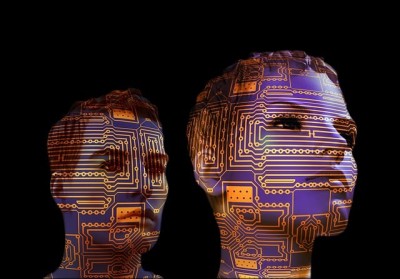Smart Living: Embracing Technology for a Better Tomorrow
-1745570755.jpg)
In an era where technology is advancing at an unprecedented rate, the concept of “smart living” has moved from science fiction to everyday reality. From automated homes to health-tracking gadgets, the integration of technology into daily life is reshaping the way we live, work, and connect with the world around us. But what does smart living really mean, and how can we harness its potential to improve our lives? Let’s explore how embracing technology can lead us toward a better tomorrow.
1. What is Smart Living?
Smart living refers to the use of technology to enhance the efficiency, comfort, and convenience of daily life. It encompasses the use of smart devices, automation systems, and connected technologies to create environments that are safer, more energy-efficient, and more responsive to our needs.
Key aspects of smart living include:
- Smart homes with devices like thermostats, lights, and security systems controlled via apps or voice commands.
- Wearable technology such as fitness trackers and health-monitoring devices.
- AI-powered systems that anticipate and automate tasks, enhancing convenience and productivity.
These innovations are transforming everything from how we interact with our living spaces to how we manage our personal health, financial well-being, and daily routines.
2. Smart Homes: Transforming the Way We Live
At the heart of smart living is the smart home, where interconnected devices communicate with each other and with homeowners to provide greater control over various aspects of the household.
Key Benefits:
- Convenience: Control lights, thermostats, security systems, and even kitchen appliances with voice commands or smartphone apps.
- Energy efficiency: Smart thermostats, like Nest, learn your schedule and adjust the temperature to optimize energy usage, saving both energy and money.
- Safety and security: Smart cameras, motion detectors, and doorbell cameras such as Ring allow homeowners to monitor their property remotely.
📊 Fact: The global smart home market is projected to reach $135.3 billion by 2025, driven by consumer demand for automation and energy-saving solutions.
As smart homes become more commonplace, technology is making everyday tasks easier, safer, and more energy-efficient. This allows individuals to enjoy a higher quality of life with less hassle.
3. Health and Wellness: Technology for a Better Quality of Life
Smart living extends beyond the home and touches every aspect of our health and well-being. With the advent of wearable technology, people can now monitor and manage their health in real-time.
Examples of Technology in Health:
- Fitness trackers like Fitbit and Apple Watch offer insights into physical activity, heart rate, sleep patterns, and more.
- Smart medical devices such as blood pressure monitors and glucose meters help patients manage chronic conditions.
- Telemedicine platforms allow remote consultations with doctors, making healthcare more accessible and convenient.
📈 Fact: The wearable health tech market is projected to reach $87 billion by 2025 (Grand View Research).
These innovations allow individuals to take a more active role in managing their health, providing insights and early detection that can help prevent illnesses and enhance overall well-being.
4. Smart Mobility: Moving Toward a Sustainable Future
In the age of smart living, transportation is undergoing a significant transformation. The rise of electric vehicles (EVs), autonomous cars, and ride-sharing apps has changed the way we think about travel and mobility.
Benefits of Smart Mobility:
- Environmental sustainability: Electric vehicles are reducing our reliance on fossil fuels and decreasing emissions.
- Efficiency: Autonomous cars and smart traffic management systems promise to reduce congestion and improve travel times.
- Convenience: Ride-sharing platforms like Uber and Lyft have made it easier for individuals to get around without owning a car, providing cost savings and reducing the need for parking.
🌱 Fact: By 2040, electric vehicles are expected to account for 58% of all new car sales (BloombergNEF).
Smart mobility solutions are not just about convenience—they’re about creating a cleaner, greener future for all.
5. Smart Work: Embracing Digital Tools for Productivity
Technology has revolutionized the workplace, making it easier for people to collaborate, innovate, and work remotely. Tools like cloud computing, project management software, and video conferencing have become integral parts of the modern workplace.
Benefits of Smart Work:
- Remote work: Technology allows individuals to work from anywhere, offering greater flexibility and work-life balance.
- Collaboration tools: Platforms like Slack, Zoom, and Google Workspace make it easy for teams to communicate and share information in real-time.
- Productivity: AI and automation tools streamline repetitive tasks, allowing workers to focus on higher-value activities.
📊 Fact: A recent report by Gallup found that 56% of U.S. workers are able to work remotely at least part-time, and many companies are offering flexible work arrangements.
With the right tools, technology can unlock new levels of productivity and collaboration, empowering people to work smarter, not harder.
6. Smart Cities: Building the Cities of Tomorrow
As urban populations continue to grow, cities around the world are embracing smart technologies to improve the quality of life for residents. Smart cities use data and technology to optimize services like transportation, waste management, and energy consumption.
Key Features of Smart Cities:
- Smart traffic systems: Use data and sensors to monitor traffic flow and reduce congestion.
- Energy-efficient buildings: Incorporate smart technology to optimize heating, lighting, and cooling systems.
- Public services: Smart infrastructure like waste management and public lighting systems ensure more efficient use of resources.
🌍 Fact: By 2025, more than 30% of the world’s urban population is expected to live in smart cities (International Data Corporation).
Smart cities are about creating environments where people can thrive, with better services, less waste, and a more sustainable future.
7. The Future of Smart Living: Embracing Innovation for a Better Tomorrow
As technology continues to evolve, the future of smart living looks brighter than ever. With advancements in AI, machine learning, and the Internet of Things (IoT), the potential for creating fully integrated, responsive environments is limitless.
Emerging Technologies to Watch:
- AI-powered home assistants that understand your needs and anticipate your preferences.
- Augmented reality (AR) that transforms the way we interact with the world around us.
- Blockchain technology for more secure and transparent data management.
The key to embracing a smarter tomorrow lies in adopting these technologies in a way that enhances our lives while promoting sustainability, security, and inclusivity.
A Smarter, More Connected World
Smart living is no longer a concept for the future—it’s a reality that is improving our lives today. By embracing technology, we can enhance the efficiency, convenience, and sustainability of our homes, workplaces, and cities. The journey toward a smarter, better tomorrow is well underway, and the possibilities are endless.
As we continue to innovate and integrate technology into our daily routines, we must remember that at the heart of smart living is the goal of creating a more connected, efficient, and sustainable world for everyone. Embrace the future, and let technology work for you.
-1745570753.jpg)
Connected World: The Role of Tech in Modern Living
-1745570758.jpg)
The Rise of Automation: What It Means for Work and Life

The Ethical Dilemmas of AI and Machine Learning

Using Social Media the Right Way: Tips for Kids and Teens





-1745569762.jpg)
-1745569762.jpg)
-1745569769.jpg)
-1745569771.jpg)